Your cart is currently empty!
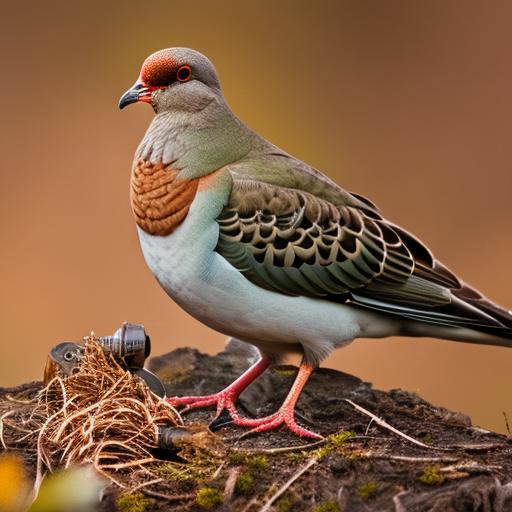
Ultimate Guide Series: How to Hunt Doves

Table of Contents
Introduction
Hey there, fellow hunters! If you’ve ever been intrigued by the graceful flight of doves and wondered how to hunt them, you’re in the right place. Dove hunting is not just about the thrill of the chase; it’s a tradition, a bonding experience, and for many, a way of life. As someone who’s spent a good chunk of their life specializing in hunting small game, I’ve had my fair share of experiences – both the highs of a successful hunt and the lows of missed opportunities. But that’s the beauty of it, isn’t it? Every hunt is a learning experience. This guide on “how to hunt doves” is a culmination of years of experience, tips, tricks, and a deep respect for the game. Whether you’re a seasoned hunter or just starting out, there’s always something new to learn. So, strap in and get ready for a deep dive into the world of dove hunting.
Understanding Dove Behavior
Migratory Patterns and Habits of Doves
One of the first things you’ll want to grasp when diving into the world of dove hunting is understanding their migratory patterns. Doves, like many birds, have specific times of the year when they move from one region to another. This migration is primarily influenced by food availability and seasonal changes. For instance, in the early fall, you’ll often find doves flocking to areas with abundant food sources, like freshly harvested grain fields or sunflower patches. Being aware of these patterns can significantly increase your chances of spotting and successfully hunting these birds. It’s a bit like being a detective – you’re piecing together clues to predict their next move. And trust me, there’s nothing more satisfying than setting up in a spot and watching as a flock of doves makes its way right into your line of sight.
Recognizing Different Species and Their Unique Behaviors
Now, here’s where things get a tad more intricate. Not all doves are the same. Depending on where you’re hunting, you might come across various species, each with its unique behaviors and quirks. For instance, the Mourning Dove, with its distinct cooing and swift flight, is a common target for many North American hunters. Then there’s the White-winged Dove, which tends to be a bit chunkier and has a different wing pattern. Recognizing these differences is crucial, not just for the hunt but also for adhering to local hunting regulations.
Each species also has its own set of behaviors. Some might prefer roosting in tall trees at the edge of a field, while others might be more inclined to stay closer to water sources. Observing and understanding these behaviors can give you a significant edge. It’s like getting to know an old friend – the more time you spend observing and understanding them, the better you’ll predict their next move.
In the world of dove hunting, knowledge truly is power. The more you understand about these graceful birds, their habits, and their preferences, the more successful and ethical your hunts will be. So, before you head out with your gear, spend some time getting to know your quarry. It’ll make all the difference.
Choosing the Right Equipment
Shotguns: Types, Gauges, and Recommended Brands
Alright, let’s talk gear. When it comes to dove hunting, your shotgun is your trusty sidekick. But not all shotguns are created equal, and the type you choose can make a significant difference in your hunting experience. For doves, a 12 or 20 gauge is typically the go-to. They offer a good balance of power and pattern spread, ensuring you have a fair shot without causing unnecessary damage to the bird. Semi-automatics are popular due to their rapid-fire capability, but over/unders and pump-actions have their loyalists too. As for brands, it’s a bit subjective. I’ve had great experiences with Remington, Mossberg, and Beretta, but it’s essential to find one that feels right in your hands. If possible, head to a local gun shop or range and try a few out before committing.
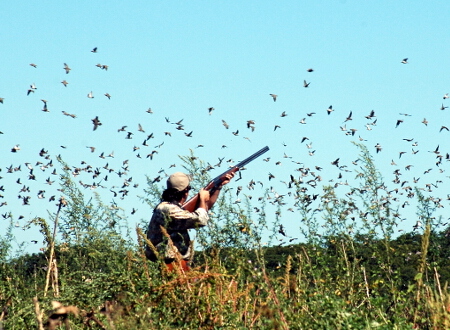
Ammunition: Selecting the Right Shot Size and Type
Once you’ve got your shotgun sorted, it’s time to think about ammunition. For doves, you’ll want to go for a smaller shot size – typically #7 1/2, #8, or #9. These sizes provide a dense pattern, increasing your chances of hitting a fast-moving dove without causing excessive damage. As for the type, lead shots have been the traditional choice, but with increasing environmental concerns, many hunters are transitioning to steel or other non-toxic alternatives. It’s a good idea to check local regulations as some areas have restrictions on the type of shot you can use.
Essential Gear: Decoys, Camouflage, and Other Accessories
Beyond the gun and ammo, there’s a world of gear that can elevate your dove hunting game. Decoys, for instance, can be a game-changer. Setting up a few dove decoys in a visible spot can attract passing birds, making your job a tad easier. Camouflage is another essential. Doves have sharp eyes, and anything that helps you blend into your surroundings is a plus. This doesn’t mean you need a full camo suit – even a camo hat or shirt can make a difference. Lastly, don’t forget accessories like a comfortable hunting stool, a good hunting vest with ample pocket space, and protective eyewear and ear protection. It’s the little things that often make the biggest difference in ensuring a successful and enjoyable hunt.
In the end, the right equipment doesn’t just enhance your chances of success; it ensures you’re hunting safely and ethically. So, invest the time in choosing gear that suits your needs and respects the game.
Scouting and Picking the Perfect Location
Importance of Pre-Season Scouting
Let’s get one thing straight: if you’re serious about dove hunting, you can’t skip the scouting. Think of it as doing your homework before the big test. Pre-season scouting gives you a leg up, allowing you to understand where the doves are feeding, watering, and roosting. By putting in the time before the season starts, you can identify patterns in their behavior, which will be invaluable when the hunting season kicks off. Plus, there’s something genuinely satisfying about watching these birds go about their business, unaware of the observer. It’s a chance to connect with nature and appreciate the beauty of the game before the hunt begins.
Identifying Dove Hotspots: Waterholes, Grain Fields, and Flyways
Now, onto the juicy bits: where to find these elusive birds. Doves, like all creatures, have basic needs: food, water, and shelter. Waterholes, especially in drier regions, are like magnets for doves. If you find a reliable water source, chances are you’ve hit the jackpot. Grain fields are another favorite. After a harvest, these fields are littered with leftover grains, making them a dove buffet. Keep an eye out for fields of sunflower, millet, or corn. Lastly, flyways. These are the aerial highways doves use to move between feeding and roosting areas. If you can identify a popular flyway, you’ve got a prime hunting spot.
Setting Up: Positioning and Concealment Techniques
Alright, you’ve done your scouting, and you’ve identified a hotspot. Now what? It’s all about positioning and concealment. When setting up, consider the sun’s position. Ideally, you want the sun behind you, making it harder for approaching doves to spot you. As for concealment, it’s not just about wearing camo (though that helps). Consider the natural surroundings. Are there bushes or trees you can use as cover? Maybe a natural depression in the ground to set up in? Use what nature provides. If you’re in a more open area, consider setting up a blind. It doesn’t have to be fancy – even a makeshift blind using natural materials can be effective.
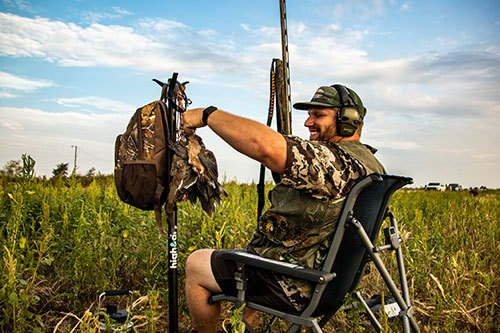
The Art of Calling and Decoying
Using Dove Calls Effectively
Let’s dive into one of the most nuanced aspects of dove hunting: calling. Now, some hunters swear by it, while others prefer the silent approach. But here’s the thing: when done right, a dove call can be a game-changer. The key is to mimic the natural cooing sounds that doves make, especially when they’re feeling relaxed and safe. This can signal to other doves that the area is secure, enticing them to come closer. But, and this is crucial, moderation is key. Overcalling can make you sound unnatural and spook the birds. Start with a few gentle coos, wait, and observe their reaction. It’s a dance, and like all dances, it requires rhythm and timing.
Setting Up Decoys: Patterns and Positioning
Decoys are another fantastic tool in the dove hunter’s arsenal. When set up correctly, they can give the illusion of a safe and active feeding or resting area, drawing in real doves. The trick is in the positioning. Doves are social birds, so setting up your decoys in small groups can be effective. Consider placing them near known food sources or waterholes. As for patterns, randomness is your friend. Nature is rarely orderly, so scatter your decoys in a way that looks natural, with some closer together and others a bit apart. If you have a decoy with moving wings, even better! The motion can catch the eye of passing doves and pique their curiosity.
Tips for Attracting and Holding Doves in Your Area
Now, beyond calls and decoys, there are a few additional tricks to keep up your sleeve. First, consider the terrain. Doves prefer flat or gently rolling areas where they can easily spot predators. If you’re hunting near a field, a freshly tilled or mowed section can be particularly attractive to them. Water is another big draw. If you’re near a pond or stream, setting up nearby can be a good strategy, especially during hotter parts of the day when doves are looking to drink.
Another tip? Be still. Doves have keen eyesight, and sudden movements can send them flying in the opposite direction. Settle into your spot, stay patient, and let the birds come to you.
Shooting Techniques and Tips
Proper Stance and Gun Mounting
Alright, let’s get down to the nitty-gritty: shooting techniques. First and foremost, your stance. Think of it as the foundation of your shot. A good stance provides stability, ensuring your shots are accurate and consistent. You’ll want to stand with your feet shoulder-width apart, slightly angled towards your target. This gives you a solid base and allows for a bit of swivel as you track the doves.
Now, onto gun mounting. This might sound basic to seasoned hunters, but it’s something even veterans can slip up on. When that dove comes into view, it’s easy to get excited and rush the mount. But a poorly mounted gun can throw off your aim and even cause discomfort or injury. Bring the gun up to your cheek, not your cheek down to the gun. The stock should fit snugly into your shoulder, absorbing the recoil. Practice this motion until it becomes second nature. Trust me, in the heat of the moment, muscle memory is your best friend.
Leading the Target: Calculating Distance and Speed
Doves are fast and agile, often changing direction on a dime. This means that simply aiming directly at them rarely results in a successful shot. Instead, you’ll need to “lead” the target. This involves aiming slightly ahead of the dove, anticipating its path. The exact lead will depend on the bird’s speed and distance, but as a general rule, aim for a few feet ahead. With experience, you’ll develop an instinct for this, but in the beginning, it might take some trial and error. Don’t get discouraged; even the best hunters miss from time to time.
Safety Precautions and Best Practices
Safety, safety, safety. I can’t stress this enough. Always treat your gun as if it’s loaded. Keep your finger off the trigger until you’re ready to shoot. And always be aware of your surroundings. Before taking a shot, ensure there are no people, buildings, or domestic animals in your line of fire or beyond your target.
Additionally, wear protective gear. Shooting glasses protect your eyes from any debris, and ear protection is a must to prevent hearing damage. Lastly, respect the game and other hunters. Follow local hunting regulations, only take shots you’re confident in, and always prioritize safety over making a catch.
Field Dressing and Preparation
Ethical Handling of Harvested Doves
Once you’ve successfully harvested a dove, the real work begins. But before we dive into the technicalities, let’s talk ethics. Every hunter has a responsibility to ensure that the game they take is treated with respect and dignity. This means ensuring a quick and humane kill and not taking more than you can use. Remember, hunting isn’t just about the thrill of the chase; it’s about connecting with nature and understanding our role in the ecosystem. So, handle each bird with care, gratitude, and respect.
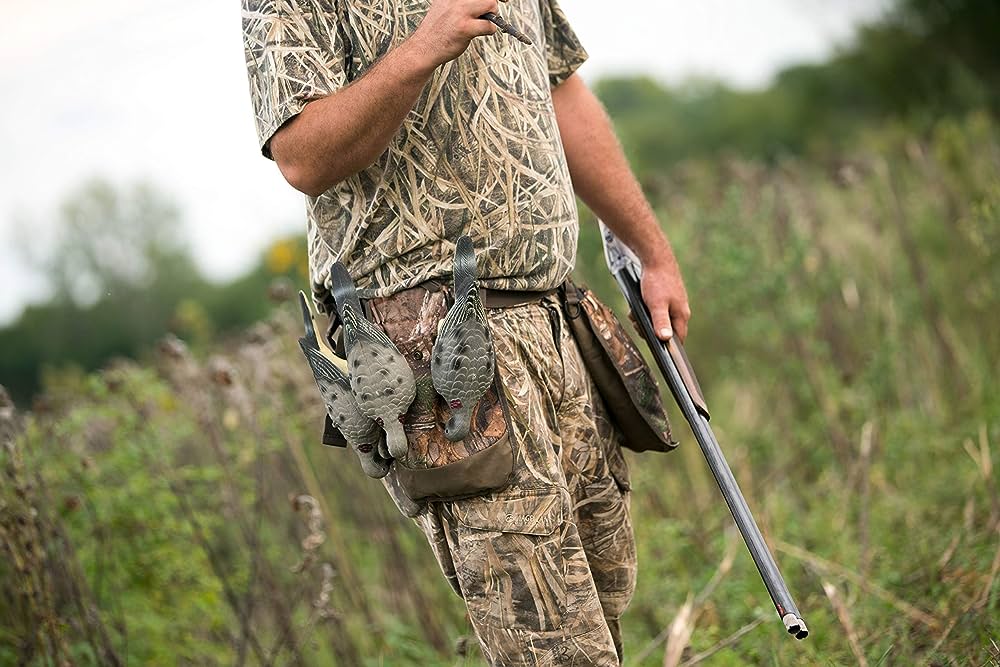
Cleaning and Dressing Techniques
Now, onto the practical side of things. Field dressing is essential to preserve the meat and ensure it’s safe to eat. Start by laying the dove on its back and plucking the feathers from its breast. This will expose the skin, which you can then cut to access the internal organs. Gently remove the entrails, being careful not to rupture any organs, as this can taint the meat.
Next, remove the head and feet. Some hunters prefer to keep the wings on for identification purposes, especially if there are multiple dove species in the area and hunting regulations to consider. Once cleaned, rinse the bird inside and out with cold water to remove any residual feathers or debris.
Storing and Preserving Your Catch
After dressing your dove, it’s crucial to store it correctly. If you’re out in the field and plan to hunt for a while longer, consider bringing a cooler with ice packs. Place the cleaned doves inside, ensuring they’re cooled quickly. This not only preserves the meat but also prevents the growth of harmful bacteria.
Once home, if you’re not planning to cook the doves immediately, you have a couple of options. For short-term storage, place the doves in a plastic bag, remove as much air as possible, and store them in the refrigerator. They should be consumed within a couple of days. For longer-term storage, consider vacuum sealing and freezing. This will preserve the freshness and flavor of the meat for several months.
Cooking and Enjoying Your Harvest
Delicious Dove Recipes for Grilling, Roasting, and More
After all the hard work, patience, and preparation, there’s nothing quite as rewarding as sitting down to a meal made from your harvest. Doves, with their tender and flavorful meat, offer a culinary experience that’s hard to match. For a simple yet delicious treat, consider grilling. Marinate the dove breasts in a mixture of olive oil, garlic, rosemary, and a splash of lemon juice. Grill them for a few minutes on each side, and you’ve got a dish that’s both succulent and smoky.
If you’re in the mood for something more elaborate, roasting is the way to go. Stuff the doves with a mixture of wild rice, cranberries, and herbs, then roast them in the oven until golden brown. The result? A rich and hearty dish that’s perfect for special occasions.
Pairing Wines and Sides with Dove Dishes
Now, let’s talk pairings. Doves have a distinct flavor that pairs beautifully with a variety of wines. A light red, like a Pinot Noir, complements the meat’s richness without overpowering it. If you prefer white wine, a Chardonnay or Sauvignon Blanc can be a delightful choice, adding a touch of acidity and freshness.
As for sides, think rustic and earthy. Roasted root vegetables, wild rice pilaf, or a simple green salad with a tangy vinaigrette can elevate your dove dish to gourmet levels. And let’s not forget dessert. A fruit tart or a slice of pecan pie can be the perfect sweet ending to your meal.
The Cultural Significance of Dove Dishes Around the World
Dove hunting and cooking isn’t just a pastime; it’s a tradition steeped in history and cultural significance. Across the globe, from the Mediterranean to the Americas, doves have been hunted and enjoyed for centuries. In Italy, for instance, doves are often braised with olives and tomatoes, creating a rich and hearty stew. In Mexico, dove tacos, seasoned with a mix of spices and topped with fresh salsa, are a beloved treat.
These dishes are more than just food; they’re a testament to the bond between humans and nature, a celebration of the hunt, and a nod to the generations of hunters and cooks who came before us.
Related Questions
What are the best times of day to hunt doves?
Ah, timing is everything, isn’t it? For doves, the early bird truly gets the worm. Morning hours, just after sunrise, are prime time as doves are most active searching for food. The late afternoon, a couple of hours before sunset, is your next best bet when they’re heading back to their roosting spots. So, grab a cup of coffee for the morning or enjoy the golden hour in the evening, and you’ll be in good shape.
How can I improve my shooting accuracy?
Improving accuracy is a mix of practice and technique. Spend time at the shooting range, and if possible, simulate dove movements with clay pigeon shooting. Focus on your stance, gun mounting, and follow-through. Remember, doves are quick and can change direction fast, so work on leading your shots. And hey, don’t get discouraged with misses. Every hunter, no matter how experienced, has those days. Keep at it!
Are there any specific regulations I should be aware of?
Absolutely! Regulations can vary based on region and country. It’s essential to familiarize yourself with local hunting seasons, bag limits, and any restrictions on ammunition or hunting methods. Some areas might also have species-specific regulations, especially if multiple dove species are present. Always check with your local wildlife agency or hunting association before heading out. Better safe than sorry!
How can I ensure a sustainable and ethical hunt?
Kudos for thinking about this! Sustainable and ethical hunting is all about respect—for the game and the environment. Only take shots you’re confident in to ensure a quick and humane harvest. Stick to bag limits and avoid over-hunting in one area. Use non-toxic ammunition if possible, and always clean up after yourself. Remember, hunting is about the experience and connection with nature, not just the number of birds you bag. Happy and ethical hunting!
Summary
Well, there you have it – a comprehensive guide on how to hunt doves, straight from the heart of an experienced small game hunter. Whether you’re looking to refine your techniques, understand dove behavior better, or simply get started on this exciting journey, I hope this guide has provided you with valuable insights. Remember, hunting is not just about the catch; it’s about the experience, the connection with nature, and the stories you’ll have to tell. Every time you set out with the intention of learning how to hunt doves better, you’re not just improving your skills; you’re also becoming a part of a rich tradition. So, keep your spirits high, your aim true, and always hunt with respect and ethics. Until next time, happy hunting!

Herb has been a longtime lover of the outdoors. Whether it be hunting, camping, fishing or just getting outside to reset. Proud father and animal lover. Bourbon anyone?

by
Tags:
Comments
2 responses to “Ultimate Guide Series: How to Hunt Doves”
-
[…] If you’re interested in cow elk hunts in Texas, you might also want to check out this article on “How to Hunt Doves” from Old Oak Syndicate. Doves are another popular game bird that hunters enjoy pursuing, and this article provides valuable tips and techniques for a successful dove hunting experience. Whether you’re a seasoned hunter or just starting out, this article will help you improve your skills and increase your chances of a fruitful hunt. So, don’t miss out on this informative read! Read more […]
-
[…] If you’re interested in hunting in the Valle Vidal area, you might also want to check out this article on “How to Hunt Doves” from Old Oak Syndicate. Doves are a popular game bird and hunting them can be a thrilling experience. This article provides tips and techniques for successful dove hunting, including the best time of day to hunt and where to find these elusive birds. So, if you’re looking to expand your hunting skills beyond elk, give this article a read. (source) […]

Categories
- Big Game Hunting (301)
- Deer (202)
- Reviews (3)
- Shooting (16)
- Slingshot (1)
- Small Game Hunting (42)
- Upland Hunting (126)
- Waterfowl Hunting (3)


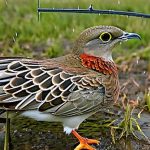


Leave a Reply